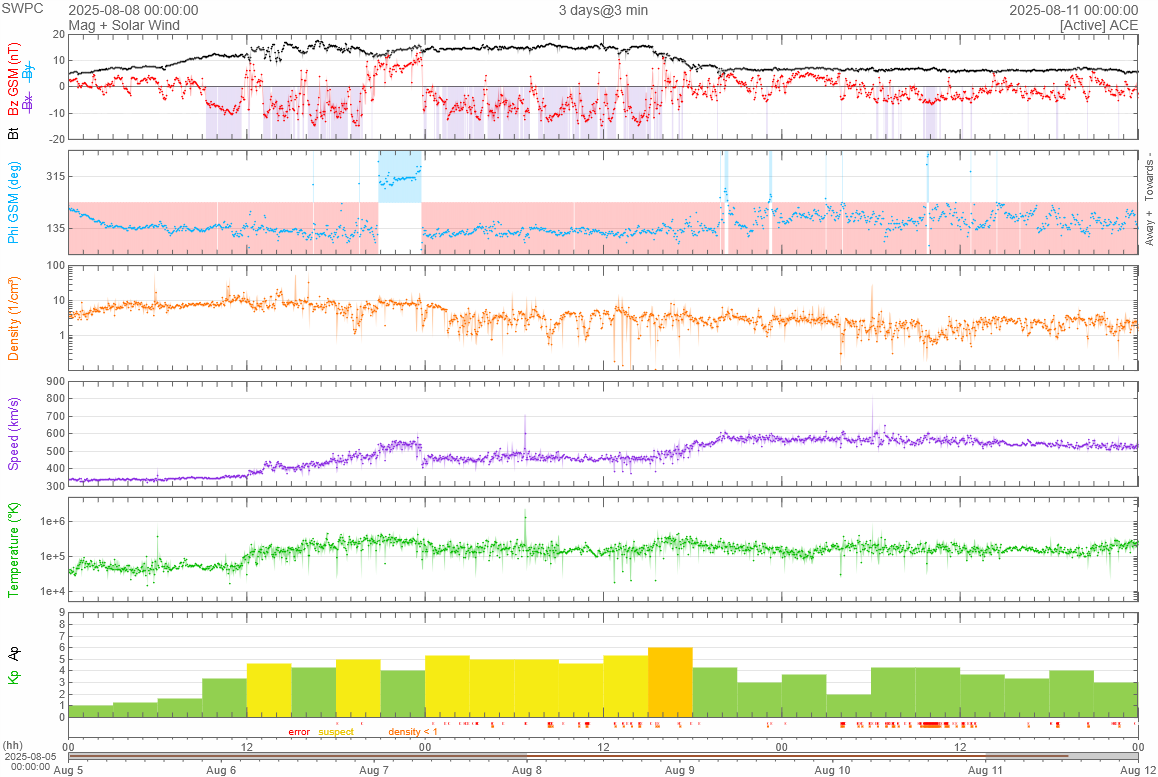Geomagnetic storm update - 11th August 2025
Geomagnetic activity increased over the weekend, 9-11th of August 2025, due to the arrival of a coronal hole high-speed stream and a coronal mass ejection (CME).
In the afternoon of the 8th of August the arrival of the high-speed stream was observed by a gradual increase in solar wind speeds. Shortly after, in the early hours of the 9th of August, a shock in the solar wind indicated the arrival of the CME, however this connection was weak. Geomagnetic activity was increased up to STORM G2 for a short period, with mostly STORM G1 periods observed.
Solar wind speeds remain elevated due to ongoing coronal hole effects, but we do not expect any further major enhancements to geomagnetic activity.
Sign-up to receive Geomagnetic Disturbance Alert emails.
Follow us on Twitter:
Follow @BGSauroraAlert for more occasional aurora alerts.
Follow @BGSspaceWeather for daily space weather forecasts.
Glossary
- BGS
- The British Geological Survey is a geoscience research centre that is part of UK Research and Innovation (UKRI) and affiliated to the Natural Environment Research Council (NERC).
- CME or Coronal Mass Ejection
- The eruption of a portion of the outer atmosphere of the Sun into space, caused by rapid changes in its magnetic field. Often occurs along with a solar flare.
- Coronal Hole
- A region in the Sun’s outer atmosphere (corona) where hot material can flow unrestrained by its magnetic fields out into space.
- Solar Wind
- The ever-present expansion of the Sun’s hot outer atmosphere into the solar system, which carries space weather within it.
- High Speed Stream
- A fast moving stream of solar wind, responsible for magnetic storms.


